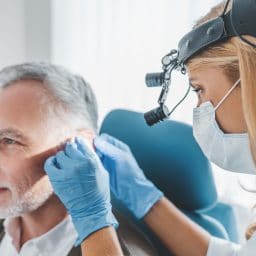Earwax production is a normal and healthy function that helps protect our ears. However, too much earwax buildup can cause problems for hearing aid users.
Common Hearing Aid Problems Caused by Earwax
When earwax builds up on your hearing aids, it can stop sound from effectively traveling through your ear. This can reduce your ability to hear when you are watching TV or out to lunch with friends at Hank’s Seafood Restaurant.
It also has the potential to block sound waves sent from the hearing aid receiver to the microphone. The sound then bounces back and causes feedback, a high-pitched whistling noise that can be quite uncomfortable.
Earwax can also clog your hearing aid’s vents and receivers, which stops it from working as effectively in treating your hearing loss.
Eventually, moisture and acids from earwax can degrade your hearing aid, causing damage that may lead to repairs or replacement of your device.
Hearing Aids Can Increase Earwax Production
Unfortunately for hearing aid users, foreign objects in the ear tend to cause more earwax production. Not only that, but they also can also interfere with the natural self-cleaning process of the ear.
Normally, earwax dries and sloughs off on its own. However, earwax is more likely to accumulate and cause a hearing impairment when this natural cleaning method is prevented due to something in the ear, such as a hearing aid.
Should You Clean Your Ear with a Cotton Swab?
If you’re concerned about earwax buildup, you might feel compelled to clean your ears with a cotton swab. However, trying to remove earwax with a Q-tip or cotton swab can actually push it further into your ear, risking impaction. Using cotton swabs can even cause ear pain and injury in some instances.
How to Prevent Earwax Buildup
Instead of risking further damage by trying to remove earwax yourself, you should visit your healthcare provider every three to six months or if you have symptoms of earwax buildup. They can check your ears for any impaction and if some is found they can either remove it in the office or treat it with a wax-dissolving agent.
It will also be important to develop a regular hearing aid cleaning routine to keep them free from earwax buildup. This will include things like:
- Wiping down your hearing aids every night with a soft, dry cloth or using a bristled brush
- Storing them in a cool, dry place while you sleep
- Keeping them away from moisture and heat
- Changing out your wax guards every few months if you use them
For more information or to schedule an appointment with one of our experts, contact Charleston ENT & Allergy today.
